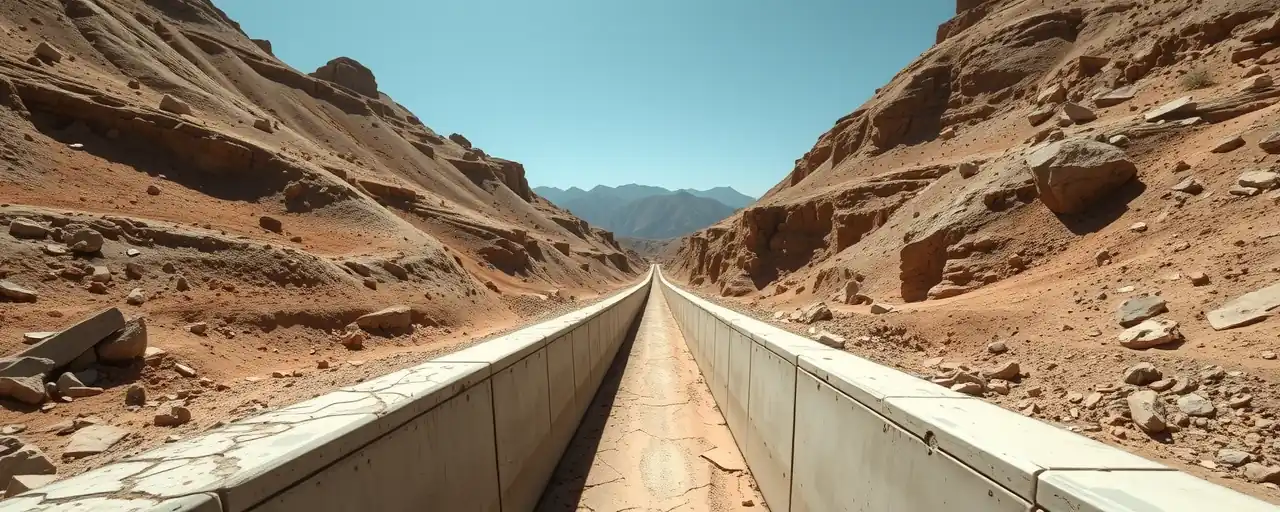A High-Stakes Plan for Water Security
California’s State Water Project, a sprawling network of canals, reservoirs, and pumps, delivers water to 27 million people and irrigates vast farmlands, fueling a $2.3 trillion economy. Now 60 years old, it struggles under climate change, with hotter temperatures and erratic rainfall cutting its reliability. The Delta Conveyance Project, a proposed tunnel to channel water through the Sacramento-San Joaquin Delta, aims to fix this, but it’s tangled in delays and disputes.
Governor Gavin Newsom’s latest budget proposal seeks to speed up the project by easing permitting, securing funding, and limiting lawsuits. Backers say it could capture water lost in storms, like last year’s atmospheric rivers, enough for 9.8 million people annually. Yet, environmental groups and Delta residents warn of ecological harm and disrupted lives, raising tough questions about the project’s path forward.
For Californians new to these issues, the debate centers on a practical concern: can the state ensure steady water for homes, farms, and businesses while preserving the Delta’s fragile ecosystem? The answer will shape the state’s future as it braces for a warmer, drier climate.
The Lifeline of California’s Water
The State Water Project powers California’s prosperity, supplying cities from San Diego to Silicon Valley and 750,000 acres of farmland. Its service area, if a nation, would rank as the world’s eighth-largest economy. Failing to maintain it could push 8 million people in underserved communities toward costlier, less dependable water sources, hiking bills for households and farmers.
Climate change makes this harder. Experts predict a 10 percent drop in California’s water supply, with the State Water Project’s reliability potentially falling 23 percent. Built for steady rainfall, its infrastructure can’t cope with today’s extreme drought-flood cycles. The Delta Conveyance Project promises to capture more water during big storms, but its $16 billion cost and environmental risks fuel heated arguments.
Cutting Through the Delays
Newsom’s plan tackles the bureaucracy slowing the Delta Conveyance Project. It simplifies permitting, confirms the Department of Water Resources’ power to issue bonds, narrows legal challenges, and eases land acquisition. These steps build on milestones, like the 2023 environmental impact report and funding from water agencies serving most Californians.
Urban water districts and farming groups cheer the changes, citing missed opportunities in recent storms when water flowed to the sea. Environmental organizations, however, argue the tunnel endangers Delta fish and water quality, calling for stronger safeguards. Delta communities also fear losing land and livelihoods, highlighting the project’s complex trade-offs.
Weighing Speed Against Stewardship
Big infrastructure projects often get stuck in regulatory mazes and lawsuits. Federal rules, like those under the National Environmental Policy Act, protect ecosystems but can drag out timelines and inflate budgets. Recent reforms in 2024 set firmer deadlines, but a 2025 rule scrapping consistent guidelines has created uncertainty, potentially sparking more legal fights.
In California, the Delta Conveyance Project pits water demands from cities and farms against environmental and local concerns. Advocates for faster permitting say it’s vital to counter climate impacts, while fishery experts and Delta landowners worry hasty decisions could harm ecosystems long-term. Both sides see the Delta as a critical hub, making consensus elusive.
Equity adds another layer. Underserved communities, hit hardest by water shortages, need affordable supplies. The project’s costs, repaid through water rates, could strain these households if savings from streamlining fall short. Balancing efficiency, ecology, and fairness remains a daunting task.
Lessons From History, Eyes on Tomorrow
California has wrestled with Delta water fixes since the 1960s, with canal and tunnel plans resurfacing under multiple governors. Each faced cost concerns, environmental resistance, and red tape. The current single-tunnel design, a leaner version of past proposals, seeks to avoid those pitfalls, but history warns that mega-projects often hit snags.
Worldwide, projects like the English Channel Tunnel or Boston’s Big Dig ballooned in cost and time due to overoptimism and shifting rules. California’s high-speed rail saga shows how stakeholder clashes can stall progress. Transparent planning and realistic budgets will be key to keeping the Delta Conveyance Project on track.
For Californians, the project’s fate will touch everyday life—from the cost of produce grown on irrigated land to tap water reliability in dry years. Adapting the state’s water system to a changing climate depends on navigating these challenges with precision and care.
A Path Forward for California’s Water
If completed, the Delta Conveyance Project could reshape how California handles water, storing more in wet years to ease shortages in dry ones. Newsom’s push to streamline aims to accelerate this, but lawsuits and public debate will test its momentum. State officials and water agencies remain confident, pointing to secured permits and funding, while environmental groups pledge to demand robust protections.
For residents, this isn’t just policy—it’s about whether water will reach homes and fields as the climate grows tougher. Success hinges on blending speed with accountability, keeping costs in check, and safeguarding the Delta’s ecosystem. The choices made now will echo across California for generations.
As the state forges ahead, the challenge is clear: securing water demands bold yet careful steps. Whether the Delta Conveyance Project becomes a cornerstone of resilience or a lesson in overreach depends on how California balances progress with responsibility.
